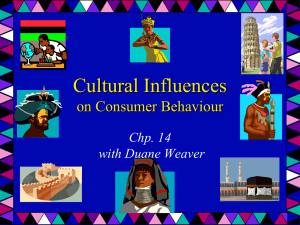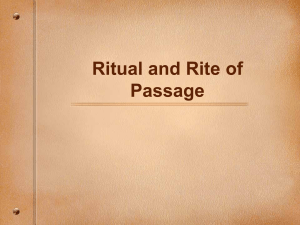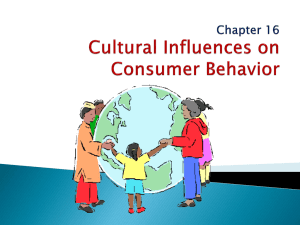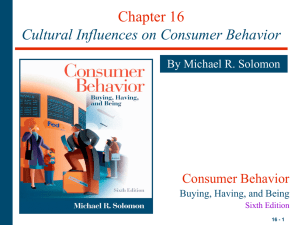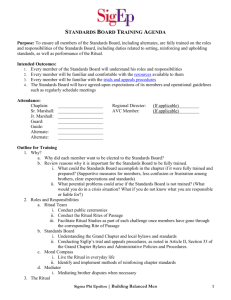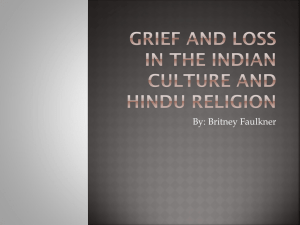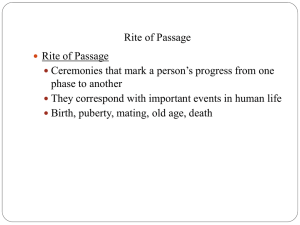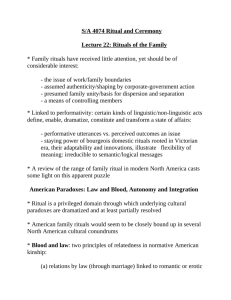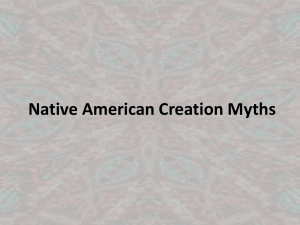Culture%20and%20CB
advertisement
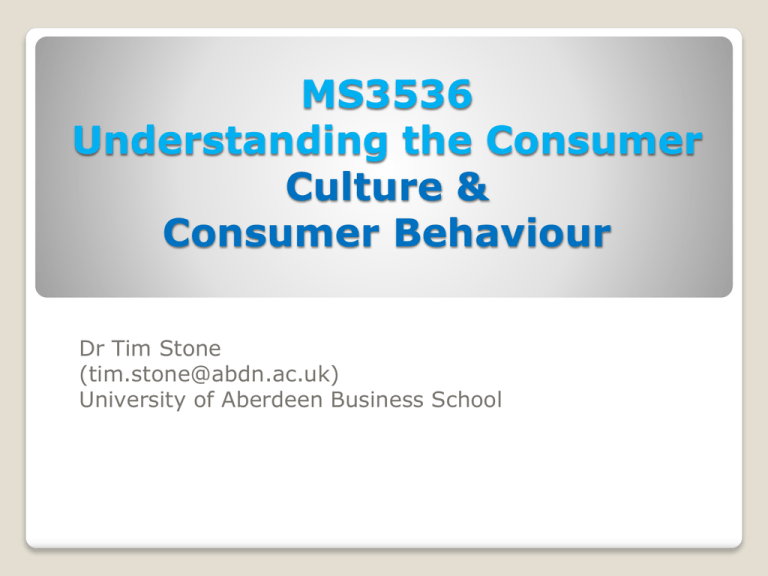
MS3536 Understanding the Consumer Culture & Consumer Behaviour Dr Tim Stone (tim.stone@abdn.ac.uk) University of Aberdeen Business School Importance of culture in consumer behaviour Culture can be viewed as the collective memory of a society (shared meanings, rituals, norms and traditions among members). Consumption choices cannot be understood without considering the cultural context in which they are made. Culture forms the prism through which people view products and try to make sense of their own and other people’s behaviour. Consumer behaviour and culture A consumer’s culture determines: • the overall priorities she/he attaches to different activities and products. • the success or failure of specific products and services. Aspects of culture A cultural system consists of three functional areas. • Ecology – the way the system is adapted to its habitat by the technology used to obtain and distribute resources. • Social structure – they way orderly social life is maintained including domestic and political groups. • Ideology – the mental characteristics of the people and the way they relate to their environment. Different cultures • Collectivist cultures – where people subordinate their personal goals to those of a stable in-group. • Individualist cultures – where importance is attached to personal goals and where people are more likely to change memberships when the demands of the group become too costly. Principles for an ethnoconsumerist approach to consumption Source: Meamber, L and Venkatesh, A. (2000), ‘Ethnoconsumerist Methodology for Cultural and Cross-Cultural Consumer Research’, in Elliott, R. and Beckmann, S. (Eds.), Interpretive Consumer Research, Copenhagen: Copenhagen Business School Press, pp. 87–108. Crescive norms Crescive norms are embedded into a culture and are only discovered through interaction with other members of that culture. These norms can include: • customs – norms handed down from the past that control behaviours. • mores – customs with strong moral overtones. • conventions – norms regarding the conduct of everyday life. These deal with the subtleties of consumer behaviour. Myths Myths are stories containing symbolic elements that express the shared emotions and ideals of a culture. Many myths involve some binary opposition, where values are defined in terms of what they are and what they are not, e.g. nature versus technology, life versus death etc. Modern myths are transmitted through advertising, films and other media. http://www.youtube.com/watch?v=-qmglGWMsdk&feature=related Functions and structure of myths Myths serve four interrelated functions in a culture. • Metaphysical – they help to explain the origins of existence. • Cosmological – they emphasise that all components of the universe are part of a single picture. • Sociological – they maintain social order by authorising a social code to be followed by members of a culture. • Psychological – they provide models for personal conduct. Rituals A ritual is a set of multiple, symbolic behaviours, which occur in a fixed sequence and tend to be repeated periodically. Rituals are related to many consumption activities, which occur in popular culture, e.g. holiday observances, gift giving and grooming. Types of ritual experience Primary behaviour source Ritual type Examples Cosmology Religious Baptism, meditation, mass etc. Cultural values Rites of passage Graduation, marriage etc. Cultural Festivals, holidays etc. Civic Parades, elections, trials etc. Group Business negotiations, office lunches Personal Grooming and household rituals Group learning Individual aims and emotions Source: Rook, D.W. (1985), The ritual dimension of consumer behaviour, Journal of Consumer Research, Vol. 12, December, pp. 251-264. The gift giving ritual Gift giving can be seen as a ritual within contemporary consumer society The gift giving ritual can be broken down into three distinct phases ◦ 1. Gestation ◦ 2. Presentation ◦ 3. Reformation Rites of passage A rite of passage is a special kind of ritual, which involves a transition from one role to another. These passages typically entail the need to acquire products and services called ritual artefacts, to facilitate the transition. Modern rites of passage include graduations, initiation ceremonies and weddings, and funerals. Sacred and profane domains Consumer activities can be divided into sacred and profane domains. Sacred domains are set apart from everyday activities or products. People, events or objects can become sacralised taking on sacred meaning to a culture. Desacralisation occurs when objects that previously were sacred become commercialised and integrated into popular culture. Summary A societies culture includes its values, ethics and material objects. Members of culture share a system of beliefs and practices. Myths, rituals and rites of passage embody cultural practices and have various sacred and profane consumption patterns embedded within them.
